Susita National Park in the Golan Heights: a special off-the-beaten-track site
I never would have visited Susita if it hadn’t been for Sara Zafrir, owner of Genghis Khan in the Golan. When I asked her what to see in the Golan Heights, she insisted that this was a “must-see.” I’m so glad I took her advice.
Disclosure: Sara sponsored me to stay in one of her yurts for free. You can read about that experience here.
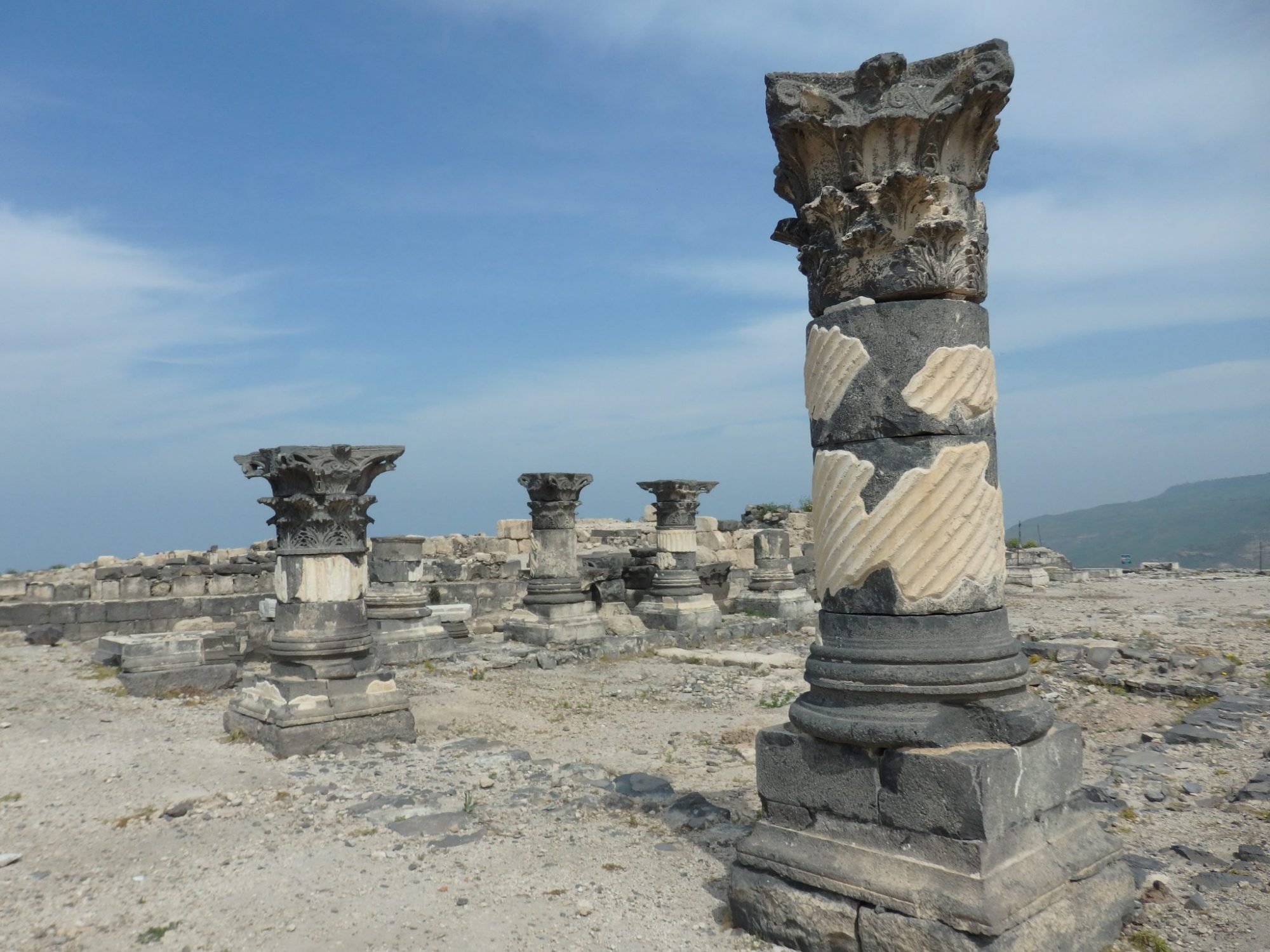
In my small rental car, accompanied by a fellow blogger, Seanna Fallon of Seanna’s World, I set off. Once we left the main road, the pavement got progressively worse, at times more pothole than asphalt. It was chilly day, but in all directions were the green rolling hills of the Golan Heights, covered in wildflowers.
Eventually, after a particularly impressive pothole, we spotted the Israeli National Park sign for Susita, also known as Antiochia Hippos. There was no entry gate, no parking lot: just a sign. We pulled over, parked the car along the road, and set off on a dirt path up a hill.
History of Susita
Susita was founded in the 2nd century BCE, though archeological evidence shows some prehistoric habitation.
Sitting on a spur of mountain, surrounded on three sides by rivers, it was a safe location to build. It became a city, surrounded by walls, starting in the 2nd century BCE.
Other villages stood outside the walls too. Susita controlled a large area including much of the Golan and the whole eastern side of the Sea of Galilee. It controlled two harbors on the Sea of Galilee too.
Water was provided to the city using an aqueduct from the Golan 24 kilometers away. Then the water moved up the hill using a pressure system: quite sophisticated for its time.
Most of the residents were Christians when Susita was at its peak, and it may have held eight churches. A small Jewish community lived there too. The ruins at Susita today mostly date from between the first century BCE to 749 CE. In that year, an earthquake destroyed the city. You can read a much more detailed history on Wikipedia.
Susita National Park
The path climbs upwards along a ridge. On our left was a steep drop, but a wire fence kept us safe. On the right, the drop was less steep, but rolls of barbed wire and signs warning of minefields kept us on the path. The views beyond the barbed wire were, at times, breathtaking.
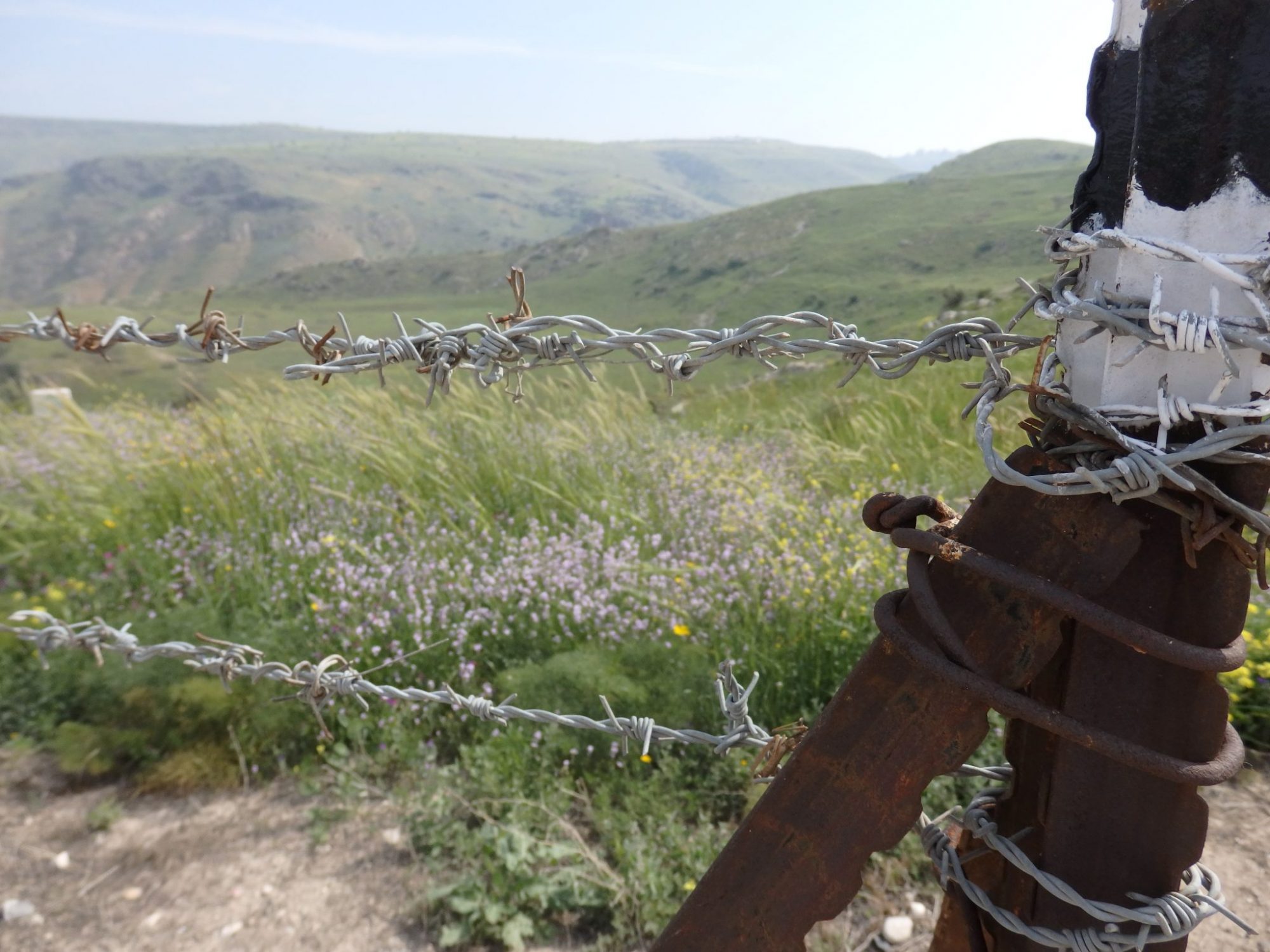
The first structure we came upon was decidedly not ancient. Looking like it was going to collapse at any moment, it consisted of an improvised bunker, with a roof of metal covered in rocks, held up by a few wooden beams. Susita was an army post during the period between Israel’s war of independence in 1948 and the Six-Day War in 1967. I assume the minefields nearby stem from the same time period.

Soon after the bunker, we started seeing rocks scattered about that were pieces of ancient structures, judging by the still-visible decorative details.
A Roman-era Road
At the top of the hill, we were astonished to see an intact Roman-era road stretching out in front of us for 550 meters. The large black blocks fit together well, and the surface was, frankly, in better condition than the road I’d driven to get here.
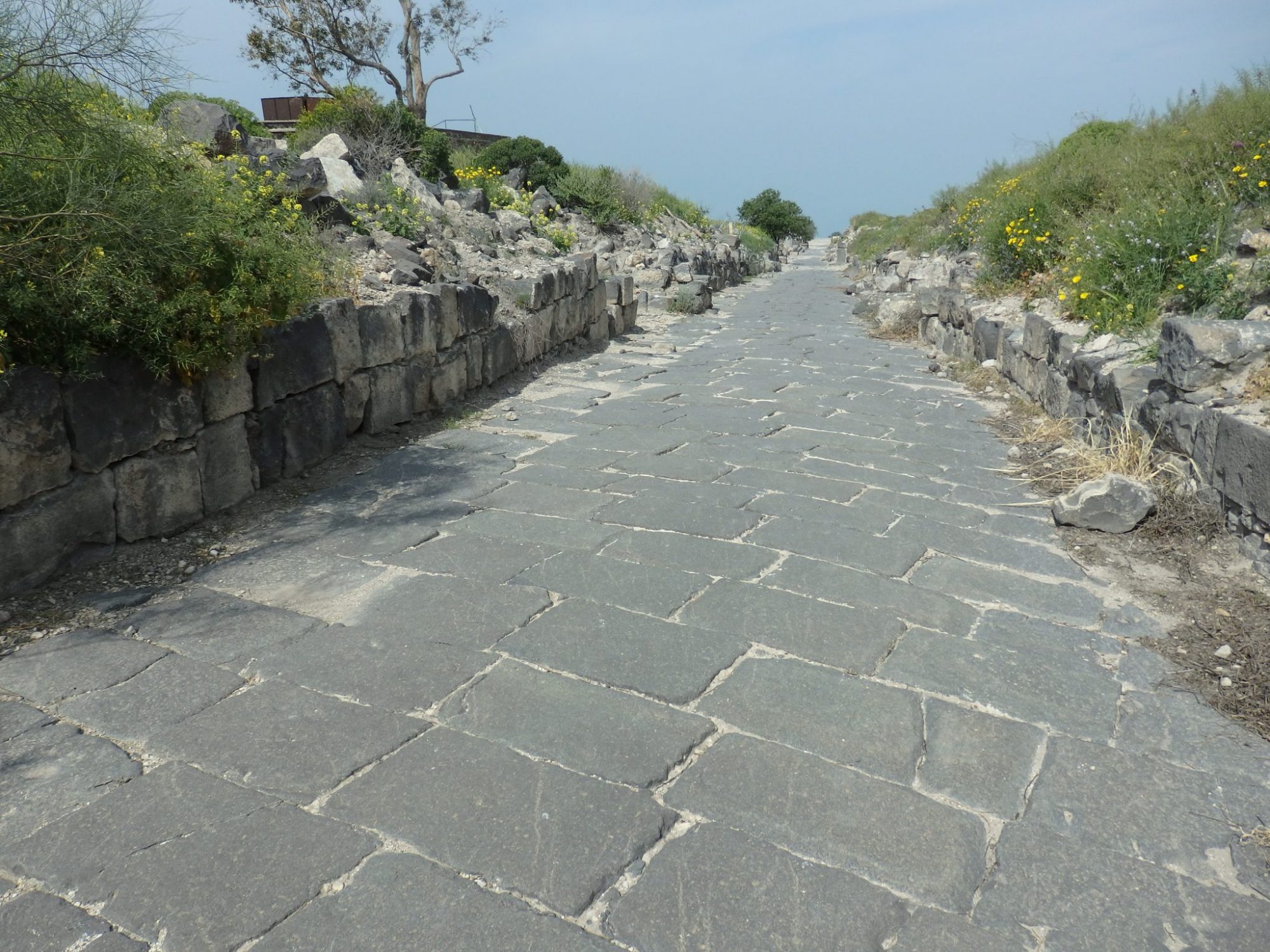
The road reaches all the way to the far end of the spur of land on which the city grew. Sunken a bit, the road is lined with the remains of walls on either side. Here and there we spotted more bits of buildings, particularly pediments of columns and other decorative stonework.
Passing two abandoned buildings from Susita’s army post days, we came to what was once the center of the city. While there was one sign at one of those army buildings explaining the ruins, we saw no specific explanatory signs, nor was there the usual tourist leaflet.
We wandered through the ruins. We could certainly tell that the city was crowded and, in places, quite fancy, judging by the sheer number of columns lying on the ground. The one informational sign mentions several roads, a main square, a temple, a basilica, a sanctuary containing Hellenistic and Roman temples (later replaced by a church), another church, an Odeion (a small theatre that could hold 500 people), the fortification walls, a bastion, a bathhouse, and houses, though it doesn’t specify how many.
If you like this article, you’ll also like these about other things to see in the Golan Heights and nearby: Defense (with a view) at Belvoir Fortress, Um el Kanatir: ancient synagogue in the Golan Heights, and 5 Christian sites near the Sea of Gallilee. All of these would combine well with a road trip including Susita.
Facebook Live
While we wandered about, I recorded a Facebook Live video. Unfortunately the reception wasn’t good, so only parts of it have clear pictures. It also just shut down at one point, and stopped by itself before I meant to stop it. I haven’t edited it at all, but I’m including it here because it shows you the extent of the ruins.
I should also point out that I was wrong in this video when I said the modern buildings date from the Six-Day War in 1967. They were in fact part of the border defenses against Syria until Israel took the Golan Heights in 1967. At that point the army abandoned it.
It was strange to wander around there by ourselves. (We did spot one other person, and later a group of Israelis arrived as well.) Not catering for tourists at all, except for the occasional fence and “danger” sign, it was remarkable to see such extensive ruins seemingly abandoned. This city was large and prosperous, and its residents had a water supply and beautiful views.
Another thing I was wrong about in the video: apparently the reason we didn’t see any archeologists at the site is that they only work on it during “excavation season” every summer. If you want, you can even sign up to go and help with the excavations! The information is on the website of Hippos-Sussita Excavations Project.
The population of Susita might have abandoned it after the earthquake, but I’m glad it’s being excavated, and I’m glad we went there. It will stand out in my memory as a special “find” from my time in Israel: my favorite of the Golan Heights sights.
Have you seen any special off-the-beaten-track places lately? Please tell about it by adding a comment below!
The images below are perfect for pinning!
Visitors Information
Susita is only about a couple of kilometers east of Ein Gev, a town on the eastern shore of the Sea of Galilee, and several hundred meters higher. I found the road by using a tourist map of the Golan Heights, supplemented by asking directions in Ein Gev. I’d suggest you do the same, because it’s a very small, rough road, and it’s not well signposted. No admission fee. Wear strong shoes and stay on marked roads and paths! If you’ll be there in the evening, bring a jacket.
I am a co-host of Travel Photo Thursday, along with Jan from Budget Travel Talk, Ruth from Tanama Tales and Nancie from Budget Travelers Sandbox. If you have a travel blog and want to join in, do the following:
- Add your blog to the linkup, using the link below.
- Put a link back to this page onto your blog post.
- Visit at least a few of the other blogs in the linkup, comment on them, share them and enjoy them!
If you don’t have a travel blog yourself, you can still click on any of the blogs below and visit them!




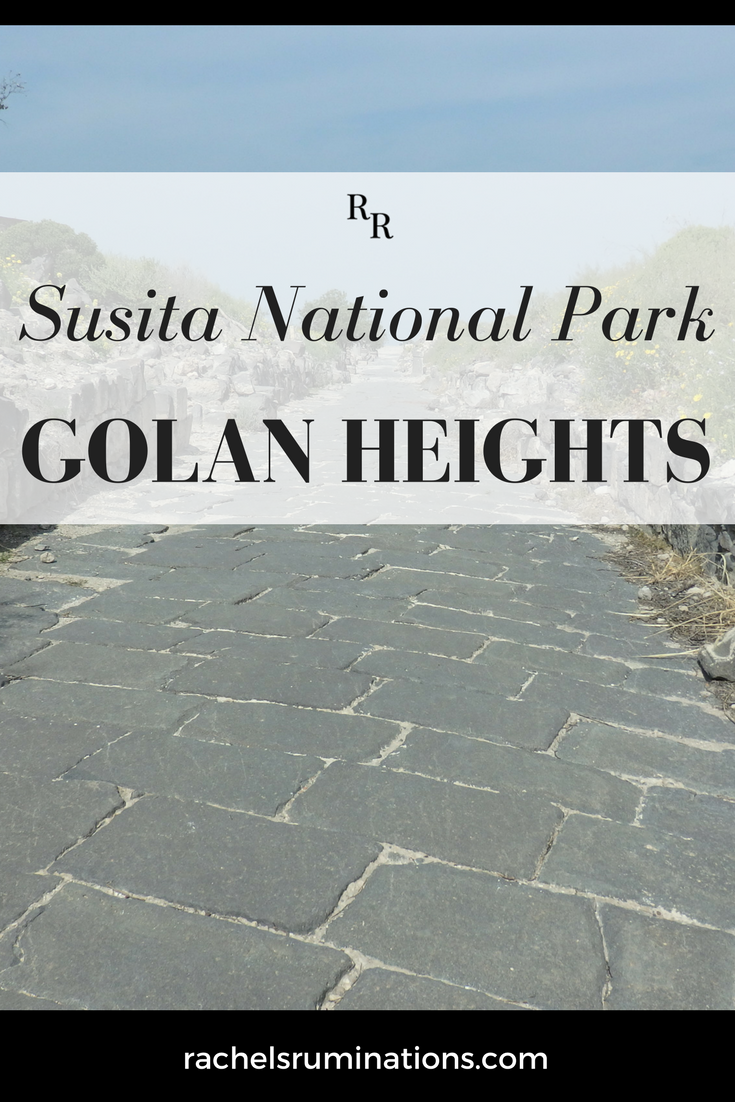
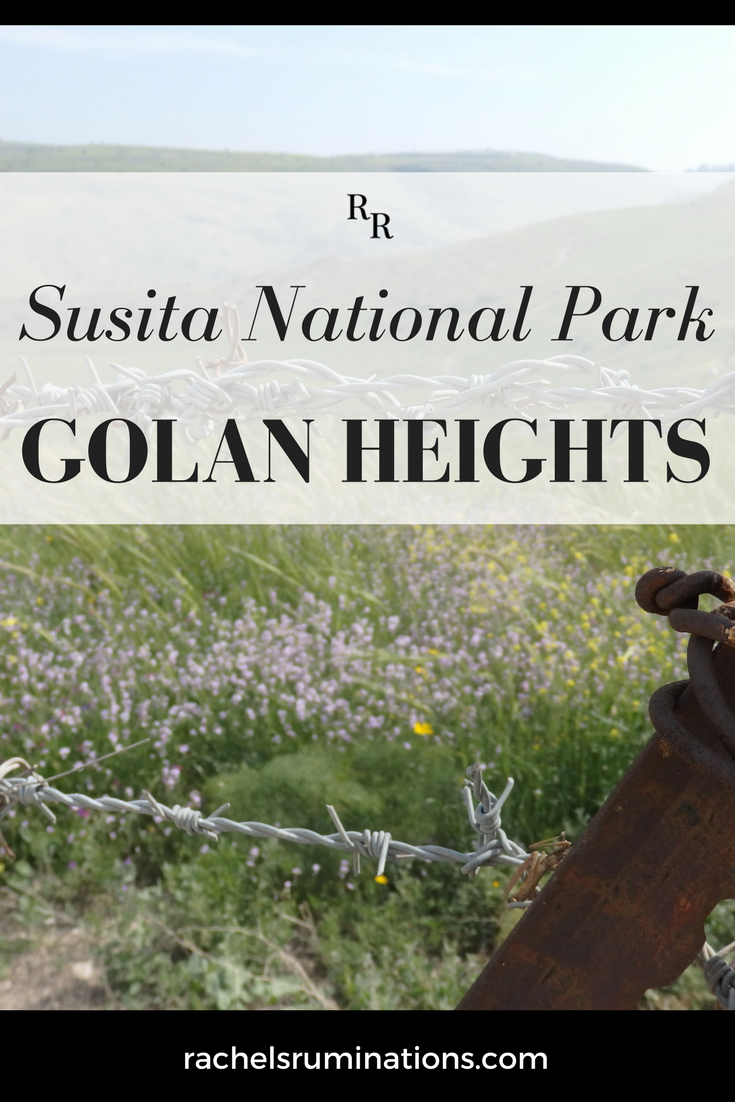

I love places way off-the-beaten-path where you have the feeling of discovering it all for yourself. The Roman road is amazingly intact and I never would have guessed that it was so ancient. Your photo of the pillars against the blue sky is my favorite. Great post! Anita
Thanks! I liked that one too! I find it difficult to photograph ruins. What’s so impressive to me somehow often seems much less impressive in a photo.
What a fascinating site – I had no idea that there was anything like that in the Golan Heights. It would be amazing to go and help with the excavations!
Our favorite finds are those ‘off the beaten track’ and this one looks fabulous. Thanks for sharing it with us.
Definitely like off-the-beaten-places best. Somehow it makes it all feel special.
It looks like you had Susita all to yourself making it even more appealing and spiritual. Your photos are excellent. I enjoyed reading about your fascinating visit here.
Thanks, Marilyn!
I missed Susita when I visited the Golan Heights, but I did see some sweet goats, https://youtu.be/S-VuKevPf_I
Cute!
Love this post, I want to visit now!
There is nothing like a minefield to keep you on the approved path. My husband who is notoriously unconcerned about signs might even obey that one. What a fascinating place.
The minefields were actually quite beautiful when I was there: a carpet of wildflowers.
I feel your excitement at finding this ruined town. We’ve done the same thing in Turkey albeit on a smaller scale. It is incredible walking around a site with no-one else in sight and no tourist signs and antiquity just lying around everywhere. Loved the video.
Thanks! Yes, it’s great having a place to yourself, and it feels like you’re in on a great secret if it hasn’t been set up yet for tourists.
It would be nice to talk to the people who are excavating the ruins. I guess they have an idea of how big is the place and what they hope to find (but that may be hard to tell). Really like when locals share ther gems with visitors or people from outside the country. #TPThursday
I find the idea of working on one of their excavations very tempting. Apparently you don’t have to be an archeologist: they accept interested amateurs. The problem is that their excavation season is in the summer, and it’s so exceedingly hot there! I fear working outside would get old very quickly!
What an interesting find and what a surprise at the top. I would love to sign up to work on a summer dig. Thanks for co-hosting this week. #TPThursday
I had the wonderful Privilege of visiting the Holy Land in October. At the risk of sounding cliché, seriously was a life changing experience for me. Audits was one of the many, many places I was able visit. The view from the top was just spectacular, words CANT Do it justice!!!
Audits (or Odits) must be a Hebrew name for the place you’re talking about, and I don’t know where it is. Are you talking about Mt Hermon? I didn’t get there on my tour of northern Israel. There’s never enough time to see everything! But you’re right: Israel can be life-changing!
I could write a book, I was a volunteer at Neot Golan for about five years from 1982 our sheep lived in the valleys above sussita and below the moshav,there was extensive prehistoric stone tool remnants, I have some lovely bits at home here in Chepstow, I learnt early on that that a road went up through The Valley onto the plateau of the Golan that was probably Roman, maybe onto Damascus. There is another hill above Sussita that was excavated earlier and showed signs of habitation, was it connected in time? Must leave it at that for now, those days are forever in my soul. xxx
Interesting! So there were inhabitants even before the Romans! Thanks for adding this information!